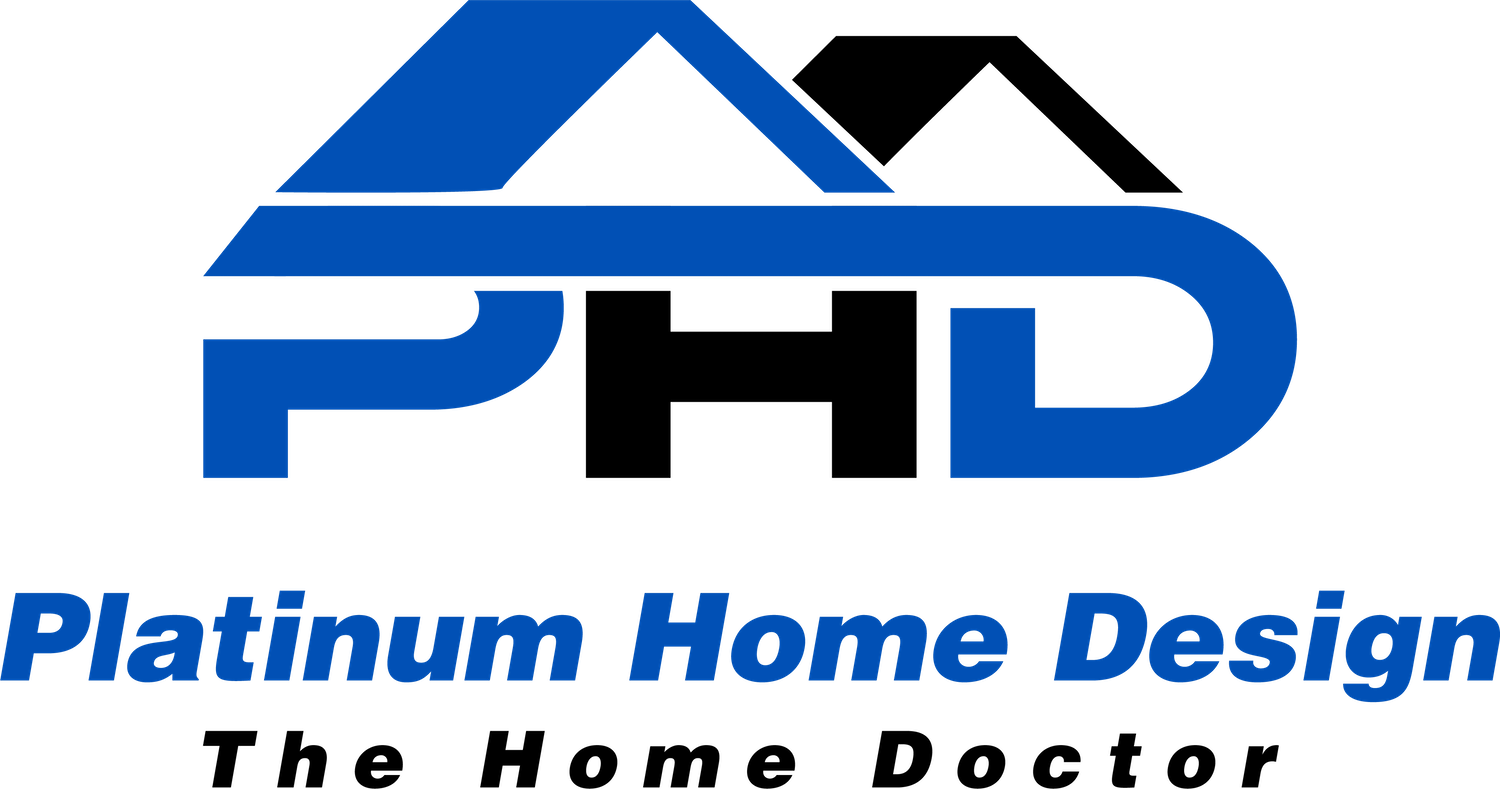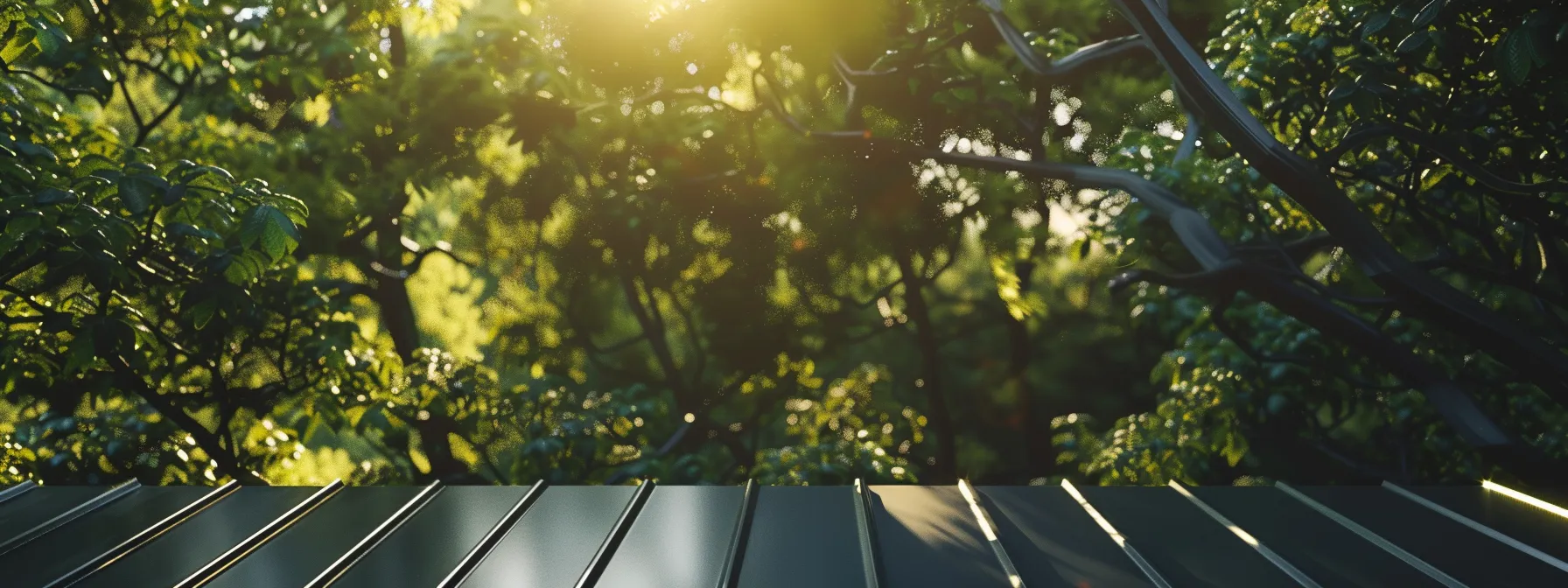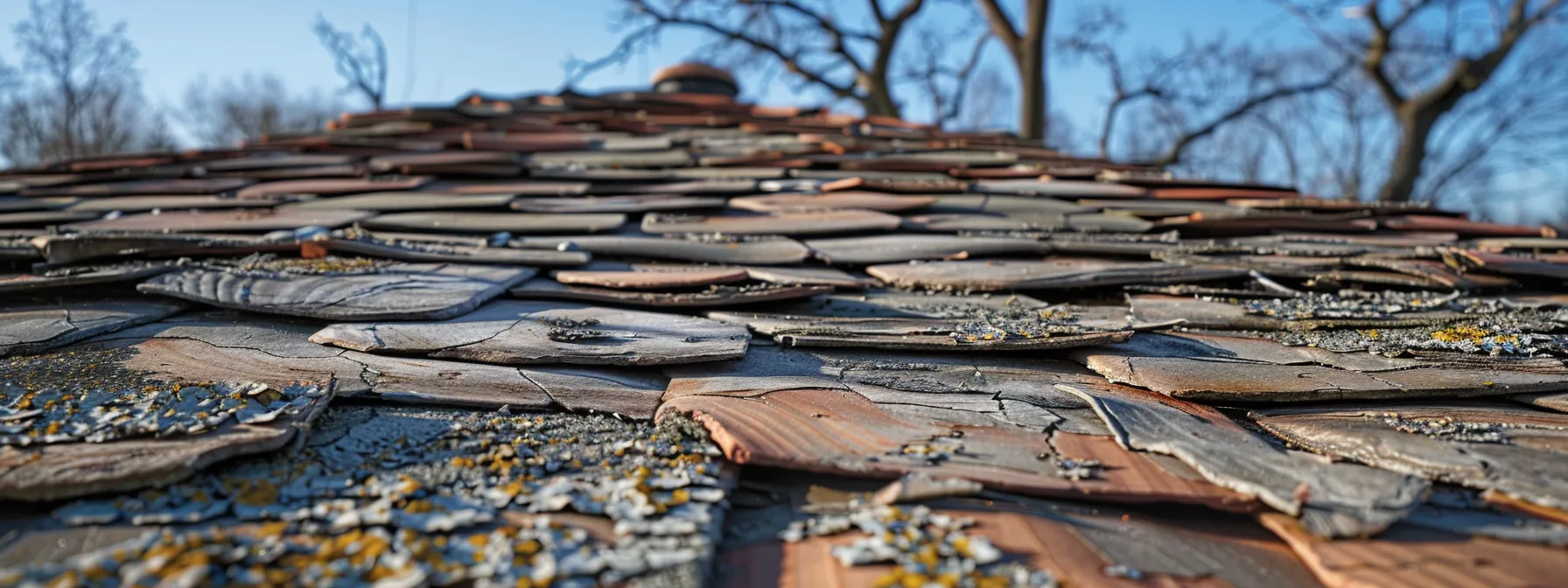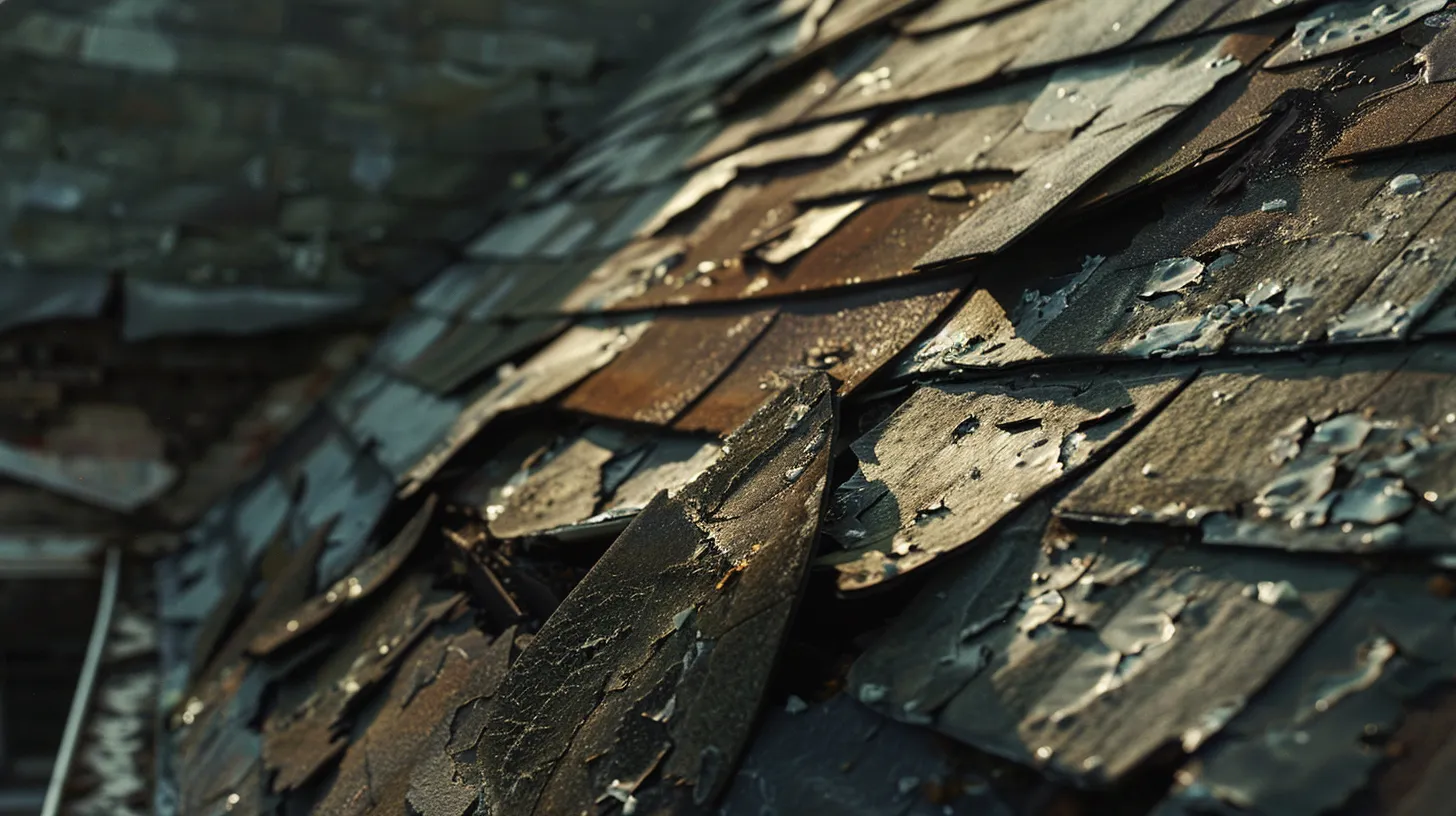
Maximize Your Roof Lifespan: Key Maintenance Insights
Table Of Contents:
- Key Factors Influencing Roof Lifespan and Maintenance
- Key Takeaways
- Key Takeaways
- Understanding Key Factors Influencing Roof Lifespan
- Recommended Maintenance Practices for Prolonging Roof Lifespan
- How Roof Lifespan Impacts Inspection Frequency
- Case Studies of Roof Lifespan Management
- Common Misconceptions About Roof Lifespan
- Future Trends in Roof Lifespan and Maintenance Practices
- Conclusion
- Frequently Asked Questions
- Conclusion
Key Factors Influencing Roof Lifespan and Maintenance
Have you ever wondered why your roof doesn’t last as long as you expect? This post explains key factors influencing roof lifespan and maintenance. You will learn about critical factors that affect durability and recommended steps to keep your roof in good shape. The content helps you tackle issues like frequent repairs and costly inspections by sharing clear maintenance practices and real-life examples. By reading this, you gain practical insights to extend your roof’s life and avoid unexpected problems.
Key Takeaways
- regular inspections catch early signs of roof wear
- quality materials and precise work extend roof lifespan
- proactive maintenance cuts long-term repair costs
- keeping detailed records improves inspection scheduling
- adapting to climate changes boosts roof durability
You manage your roof with precision by keeping an eye on the effects of heat buildup, which can weaken materials over time.
You monitor your flat roof regularly to spot any signs of damage under prolonged exposure to heat and prevent costly roof-repair-replacement work.
You prepare for severe weather by scheduling maintenance to fix minor issues before they escalate during extreme weather conditions.
You invest in quality repairs and regular inspections, ensuring that every project aligns with sound roof-repair-replacement practices even during periods of high heat and severe weather pressures.
You have seen the core points and why they matter. Now, review what shapes the roof’s life and how every detail counts.
Understanding Key Factors Influencing Roof Lifespan
You learn that roof lifespan depends on material durability using clay or metal, climate impacts like wind and leak risks, precise installation methods, regular maintenance practices, and effective roof design and slope. Each factor contributes to preserving your asset, and understanding them helps you achieve lasting results.
Material Durability and Quality
You understand that material durability is vital to maintain roofs against constant wear and tear from climate shifts and environmental conditions. You benefit from using premium materials like copper, which withstand challenges with reduced frequency of repairs and maintenance:
- Choose quality materials suitable for your local climate
- Monitor wear and tear regularly
- Schedule inspections to assess material condition consistently
You rely on proven, firsthand strategies to select materials that suit your project needs while mitigating risks related to wear and tear. Employing careful selection and maintenance practices ensures your roofs remain resilient, even when faced with challenging climate conditions.
Climate and Environmental Impact
You recognize that environmental factors such as high humidity and temperature fluctuations can increase the risk of infiltration and degrade roof materials like tile or concrete. Professional roof inspection services play a vital role in early detection of weather-related issues, allowing you to address them before they escalate and cause expensive damage.
You understand that regular professional roof inspections help you monitor the impact of severe weather, where challenges like water infiltration or concrete deterioration may occur:
Regular professional roof inspections enable you to address issues as they arise and protect your property from severe weather damage.
Installation Quality and Techniques
You know that proper installation quality forms the backbone of a durable roof, and precise techniques lay the foundation for long-lasting protection. You benefit from experienced contractors who carefully connect elements such as the ceiling and slate while ensuring safety standards are met during installation, helping reduce issues during heavy snow or harsh conditions.
You observe that meticulous techniques boost results, making commercial roof inspections a valuable tool for ongoing maintenance. This approach addresses various concerns, and you can follow these steps for effective implementation when upgrading your roof:
- Verify that slate is securely integrated into the design.
- Ensure the ceiling is properly supported and aligned.
- Implement strong safety protocols for all installation phases.
- Schedule commercial roof inspections to monitor performance under snow load.
Maintenance Practices and Frequency
You schedule regular roofing inspections and keep a well-documented maintenance policy that guides your actions after any storm or hail occurrence. You understand that a routine check helps detect early signs of mold growth and other issues that may damage your roof, ensuring you act promptly:
You follow a consistent schedule to inspect and maintain your roofing system, adjusting your approach to suit seasonal challenges and weather events. You keep records of each inspection and repair, aligning your practices with a solid policy designed to sustain your roof’s durability and prevent further damage from severe weather conditions.
Roof Design and Slope
You pay close attention to the roof design and slope, which play key roles in managing moisture and reducing water damage risks. Proper slope and design directly affect your commercial roof’s life expectancy, ensuring water efficiently drains off to prevent buildup and damage:
You understand that maintaining a suitable roof design and slope is vital to avoid costly repairs, and you rely on informed strategies to boost your roof’s durability. This approach helps you maintain a commercially viable roof that stands up to severe weather and extends its life expectancy.
The details of what affects your roof’s life reach their end here. Next, learn how real care can keep your roof strong for years.
Recommended Maintenance Practices for Prolonging Roof Lifespan
You review routine inspections to spot potential issues, clean debris, and repair minor problems before they worsen. You also consider seasonal tips and compare professional maintenance services for commercial roofing with DIY methods to reduce stress on your roof and boost its durability. This guide covers roof maintenance essentials that keep your roof strong and reliable.
Routine Inspections and What to Look For
You check your roof regularly to spot any signs of algae growth or mildew, ensuring that these issues do not spread across your roof and affect areas near the curb and attic. Routine inspections can help you identify early damage and avoid expensive fixes later on.
You perform a commercial roof inspection to assess overall condition and address problems promptly, and you record findings such as broken shingles or water marks near the curb and attic areas before they worsen:
Cleaning and Debris Removal Techniques
You maintain your property by regularly cleaning debris from your deck and roof to prevent blockages and water buildup. You use a soft brush and low-pressure water to remove dirt, ensuring your roof inspection reveals accurate conditions for roof repair and flashing maintenance.
You check the area around the flashing and gutters during a free roof inspection to spot any debris that might lead to further issues:
- Clear leaves and twigs
- Remove moss buildup
- Inspect the deck for accumulation
- Examine the flashing for debris impact
You take prompt action with practical cleaning techniques to protect your roof’s longevity and avoid costly repairs.
Repairing Minor Issues Before They Escalate
You address minor repairs by carefully monitoring your roof inspections, ensuring that any issues with wood or other materials are fixed before they develop into larger problems. You reduce the risk of extensive damage and maintain your warranty and insurance policy by taking timely action, drawing from practical experiences in roof maintenance.
You keep a close watch for early signs of damage, such as loosened wood or minor leaks, which can compromise the structural integrity of your roof over time. You use regular roof inspections to gauge conditions effectively, allowing you to repair issues promptly, preserve your warranty, and minimize potential risk under your insurance policy.
Seasonal Maintenance Tips
You plan your seasonal checks with care, ensuring proper ventilation throughout your property and scheduling regular inspections to spot any debris buildup that could hinder energy efficiency. You value these routine measures to prepare for shifts in weather and prevent the need for an early roof replacement.
You follow a detailed seasonal maintenance plan that includes checking for potential hazards and maintaining a clean environment for optimal roof performance and energy flow. You review the essential steps for effective upkeep:
- Conduct thorough inspections
- Clear debris from all surfaces
- Ensure proper ventilation throughout the structure
- Schedule timely roof replacement assessments
- Monitor energy loss areas diligently
Professional Maintenance Services vs. DIY
You consider professional maintenance services crucial when addressing the integrity of your roof, especially when dealing with wear on materials like asphalt shingle. By choosing expert help, you receive a free quote and tailored advice that ensures your roof’s longevity while avoiding potential missteps common in DIY projects.
You understand that a hands-on approach from professionals guarantees a thorough assessment of areas vulnerable to wear, particularly on asphalt shingle roofs. A professional service not only preserves your roof’s integrity but also helps you plan proactive measures that extend its longevity, saving you time and reducing the risk of future complications.
Maintaining your roof brings peace of mind. Now, you see how a roof’s age shapes the need for closer inspections.
How Roof Lifespan Impacts Inspection Frequency
You assess your roof’s age and performance to determine inspection timing. You notice that older roofs may require more frequent checks, document maintenance steps, and look for signs that indicate the need for closer monitoring. Differentiating age categories guides you in scheduling inspections and tracking performance over time for well-informed repair decisions.
Differentiating Between Roof Age Categories
You recognize that roofs in different age groups require tailored inspection frequencies to maintain their performance. Older roofs often show signs of wear sooner than newer installations, prompting you to schedule more frequent inspections to catch potential issues before they escalate.
You also understand that roofs in early service years may need less frequent checks, though regular documentation and maintenance remain vital. This practical insight allows you to optimize inspection intervals and ensure the longevity and reliability of your roofing system.
Guidelines for Inspection Timing
You assess your roof’s condition to plan effective inspection timing based on its age and usage patterns. You work with reliable professionals to schedule periodic checkups that minimize risks and extend your roof’s longevity by addressing any emerging issues promptly.
You set inspection intervals by considering how long your roof has been in service and the environmental factors it endures. You find that regular evaluations support proactive maintenance strategies and help you make timely decisions about repair or upgrade needs.
Signs Indicating More Frequent Inspections
You notice minor water stains, cracked areas, or loose shingles when you inspect your roof, suggesting that regular evaluations are needed more frequently. These signs signal that your current maintenance schedule may require adjustments to avoid further damage and costly repairs.
You detect rapid material degradation or persistent debris buildup in certain sections, which indicates a need for more regular inspections. Acting on these observations early can help you plan effective maintenance strategies that keep your roof in good condition over time.
Monitoring Roof Performance Over Time
You monitor your roof performance constantly, allowing you to catch signs of material wear and structural changes before they become significant concerns. By reviewing inspection records and tracking seasonal impacts, you gain actionable insights that help maintain the integrity of your roofing system over time.
You rely on regular evaluations to notice patterns, such as increased degradation during harsh weather events or gradual shifts in alignment, which guide your decision-making on maintenance schedules. This careful observation enables you to plan timely repairs and allocate resources effectively, ensuring your roof remains robust and secure.
Documentation of Inspections and Maintenance
You maintain thorough records of each roof inspection and repair to track changes over time, ensuring that your roofing system remains secure through regular documentation. This habit not only informs your decisions for future repairs but also supports clear communication with contractors for reliable roof maintenance.
You update your inspection logs with detailed notes on material condition and repair actions, providing transparency and a strong basis for future evaluations. Keeping systematic records allows you to identify recurring issues quickly, streamline your maintenance efforts, and make informed choices that protect your investment.
Roof lifespan shapes how often inspections occur, cutting through complexity with clear results. Real-life examples follow, showing you the true impact of careful management.
Case Studies of Roof Lifespan Management
You review successful maintenance strategies from homeowners, learn lessons from commercial roof projects, and study a comparative analysis of roof lifespans across materials. You also examine the real-life impacts of neglecting maintenance and consider expert recommendations based on experience, setting a solid foundation for practical insights into prolonging your roof’s durability.
Successful Maintenance Strategies From Homeowners
You notice that many homeowners achieve lasting roof performance by scheduling regular inspections and performing small repairs as soon as issues arise. You learn that this proactive approach helps identify minor leaks and loose materials before they grow into major problems, supporting a longer roof lifespan.
You also see that maintaining clear records of each inspection and repair builds a reliable history that guides future maintenance decisions. You can apply these practical strategies to ensure that your roof remains secure and efficient throughout its service life.
Lessons Learned From Commercial Roof Projects
You learn that commercial roof projects often reveal the importance of stringent monitoring and quick responses to minimal issues. You notice that detailed inspections help you avoid extensive repairs by catching early signs of wear and tear in materials and installation.
You find that project outcomes significantly improve when you follow clear maintenance guidelines and use quality building techniques:
- Regular inspections to detect minor damages
- Record keeping for maintenance trends
- Timely repairs to prevent escalation
By applying these lessons, you are better prepared to manage and extend the life of your commercial roofs.
Comparative Analysis of Roof Lifespans Across Materials
You compare roof materials by considering differences in durability and long-term performance. You note that metal roofs often last longer than clay tiles, providing a reliable solution with fewer repair needs in areas with harsh climate conditions.
You analyze case studies that demonstrate how various materials behave over time, and you find that proactive inspections play a crucial role in maintaining roof longevity. You understand the benefits by reviewing examples such as:
- Metal roofs offering superior longevity
- Clay tiles requiring regular maintenance
- Concrete materials showing varying performance based on climate exposure
This practical insight guides you in selecting the best option for your roofing needs.
Real-Life Impacts of Neglecting Maintenance
You notice that ignoring routine roof maintenance can lead to severe structural problems over time. You experience increased repair needs and unexpected leaks that disrupt your daily routines, highlighting the importance of staying ahead with regular inspections and upkeep to maintain your roof’s lifespan.
You see that postponing minor repairs may trigger costly issues such as water damage and material degradation. You learn from real-life case studies that timely interventions not only extend your roof’s durability but also reduce future repair expenses, making regular maintenance a wise investment for your property.
Expert Recommendations Based on Experience
You gain actionable insights when you consider expert recommendations backed by years of experience in roof maintenance and repair. You notice that specialists advise scheduling regular inspections and addressing even minor issues quickly, which helps extend your roof lifespan and saves you time and money over future repair efforts.
You also learn that experienced professionals emphasize the importance of using quality materials and proven installation techniques to prevent premature wear. You find that these practical strategies enable you to maintain a durable roofing system and reduce the likelihood of unexpected repair needs, ensuring your home stays secure.
Case studies show how careful management extends a roof’s life. Now, clear facts dispel old myths about roof durability.
Common Misconceptions About Roof Lifespan
You question common myths about roof age and replacement, material performance, inspection frequency, cost assumptions, and warranty details. You learn practical insights that help clear up misunderstandings and guide your maintenance decisions, ensuring you know when to repair or replace your roof effectively.
The Truth About Roof Age and Replacement
You recognize that roof age is not the sole reason for replacement, as proper maintenance and high-quality materials play a significant part in extending your roof’s service life. You learn that a well-kept roof can continue to perform effectively long past the typical lifespan, provided it is inspected and maintained regularly by professionals.
You understand that focusing on routine inspections and scheduled repairs prevents premature roof replacement and minimizes unexpected expenses. You find that addressing issues early and using quality repair methods allows you to delay roof replacement and keep your home secure.
Myths Surrounding Roof Materials and Longevity
You may have heard that certain materials automatically guarantee a longer roof lifespan regardless of circumstances. You understand that relying solely on material type is a common myth, as factors such as quality installation and regular maintenance significantly influence durability.
You recognize that many homeowners mistakenly believe that selecting high-end materials removes the need for periodic inspections and repairs. You know that practical steps, when combined with sound upkeep practices, are vital for prolonging roof life, as seen in the following insights: :
- Misunderstanding the role of regular maintenance
- Overreliance on initial material quality
- Neglecting proper installation techniques
Misunderstandings About Inspection Frequency
You often assume that frequent inspections are unnecessary unless obvious damage appears. You must understand that regular evaluations help you catch subtle issues early, which saves you time and money on major repairs later.
You may overlook the value of periodic assessments because you think your well-built roof will last indefinitely. You benefit from involving experienced professionals who keep track of material wear and weather-related effects, ensuring your roof remains durable over time.
Debunking Cost-Related Assumptions
You often assume that higher costs always mean better roof longevity, but your experience shows that meticulous maintenance practices and timely repairs can reduce long-term expenses significantly. You learn that cost-related assumptions sometimes overlook the benefits of regular inspections and quality maintenance.
You gain practical insights when you analyze repair records and maintenance logs to uncover true cost drivers, leading you to realize unexpected savings from proactive actions. Here are some key points that support this approach:
- Regular inspections reveal minor issues early
- Timely repairs prevent costly future damage
- Efficient use of quality materials minimizes overall expenses
Clarifying Guarantees and Warranties
You assess guarantees and warranties on your roof with a clear understanding of what they cover. You know that reading fine prints and consulting with experienced contractors ensures that warranty details truly protect your investment and guide your maintenance efforts.
You rely on detailed documentation to compare warranty terms and validate repair procedures before starting a project. You examine warranty components such as material defects, workmanship coverage, and repair timelines to ensure reliable support, as shown in the table below:
Old myths no longer bind us. Ahead, fresh ideas and clear steps await to keep your roof strong.
Future Trends in Roof Lifespan and Maintenance Practices
You explore new roofing material inventions, smart technology for maintenance, predictive analytics for scheduling inspections, and adjustments for a changing climate. You see emerging industry standards that shape roof upkeep, offering practical insights to improve longevity while keeping costs low and performance steady.
Innovations in Roofing Materials
You benefit from the latest advancements in roofing materials that deliver reliable performance and meet your property’s unique needs. New roofing products, designed for better durability in varying climates, offer simple solutions to extend your roof’s lifespan, reducing repair work and enhancing overall function.
You notice the impact of these innovative materials through improved energy efficiency and weather resistance. Practical examples show that using such advanced products can simplify your maintenance efforts, providing a cost-effective solution that addresses your long-term roof preservation concerns.
The Role of Smart Technology in Roof Maintenance
You benefit from smart sensors and monitoring systems that provide real-time data on roof conditions, helping you pinpoint subtle issues promptly. This technology allows you to plan timely repairs and adjust your maintenance schedule effectively, reducing the risk of costly repairs in the long run.
You rely on innovative tech tools to track environmental impacts and record performance trends, ensuring you stay informed about your roof’s health. By using these advanced systems, you streamline inspection routines and improve overall maintenance practices, protecting your home from unexpected weather challenges.
Predictive Analytics for Inspection Scheduling
You benefit from using predictive analytics to plan your roof inspections with greater accuracy. This technology helps you pinpoint potential issues before they develop, allowing you to schedule maintenance at optimal times. You can reduce unexpected repair expenses by basing your inspection intervals on real-time data and weather patterns.
You take a proactive approach by incorporating predictive analytics into your routine. You use advanced monitoring systems to track performance trends that help you forecast future repairs. This modern method guides you in setting effective inspection schedules and ultimately contributes to a longer-lasting roof.
Changing Climate Considerations
You examine how shifts in weather and temperature patterns affect your roof’s durability as climate conditions evolve, placing emphasis on regular monitoring and timely maintenance. You notice that rising humidity and sudden temperature fluctuations demand adjustments in repair practices and material choices:
- Monitor seasonal weather changes
- Implement proactive inspection routines
- Adapt repair strategies to local climate patterns
You understand the importance of aligning maintenance efforts with evolving environmental conditions and use practical insights to guide your decisions. You focus on applying proven techniques to keep your roof resilient while accommodating the effects of a changing climate.
Emerging Industry Standards and Guidelines
You review new industry standards that focus on durability and safety checks for roofing systems. You find that these guidelines offer practical methods to extend roof lifespan and support routine maintenance practices.
You explore updated recommendations that help you plan inspections and repairs more efficiently. You rely on these established benchmarks to keep your roof secure and perform regular upkeep in line with modern practices.
Future trends bring fresh ideas that can reshape how you maintain your roof. Our final words tie these insights together, guiding you toward lasting shelter and smart choices.
Conclusion
You review the key factors influencing roof lifespan by focusing on material durability, precise installation, and regular maintenance practices that sustain roof performance.
You monitor environmental impacts and inspect your roof regularly to detect early signs of wear that may affect your roof durability.
You set scheduled roof inspections to ensure that minor issues are addressed swiftly and your roofing maintenance remains efficient.
You adopt proven strategies to protect your roof, achieving lasting performance through careful selection of materials and timely repairs.
Frequently Asked Questions
What factors influence roof lifespan?
Your roof lifespan depends on installation quality, material durability, proper maintenance, and weather exposure. Skilled roofing contractors ensure high-quality work that extends your roof’s performance and safeguards your home’s overall integrity.
How does maintenance help roof durability?
Regular maintenance, including inspections and cleaning, preserves roof durability by identifying minor issues early, reducing weather damage, and ensuring prompt repairs to protect your investment.
When should a roof be inspected?
You should inspect your roof once annually and after storms to spot damage early. Regular reviews by experienced professionals support your home remodeling projects and help avoid costly repairs.
Which case studies show effective roof management?
Platinum Home Design presents a Chantilly project featuring detailed records on roof repairs that reveal successful material use and implementation of proven techniques to support solid roof management.
What trends impact roof maintenance practices?
Modern roofing care reflects increased use of advanced materials, energy-saving solutions, and improved inspection tools that boost upkeep safety and durability while lowering future repair expenses.
Conclusion
You grasp that roof lifespan depends on using durable materials, proper installation techniques, and consistent maintenance. You monitor environmental impacts and schedule regular inspections to catch issues early, preventing costly repairs. You apply practical strategies that safeguard your investment while streamlining upkeep processes. You benefit from proactive measures that ensure your roof remains strong and secure over time.




